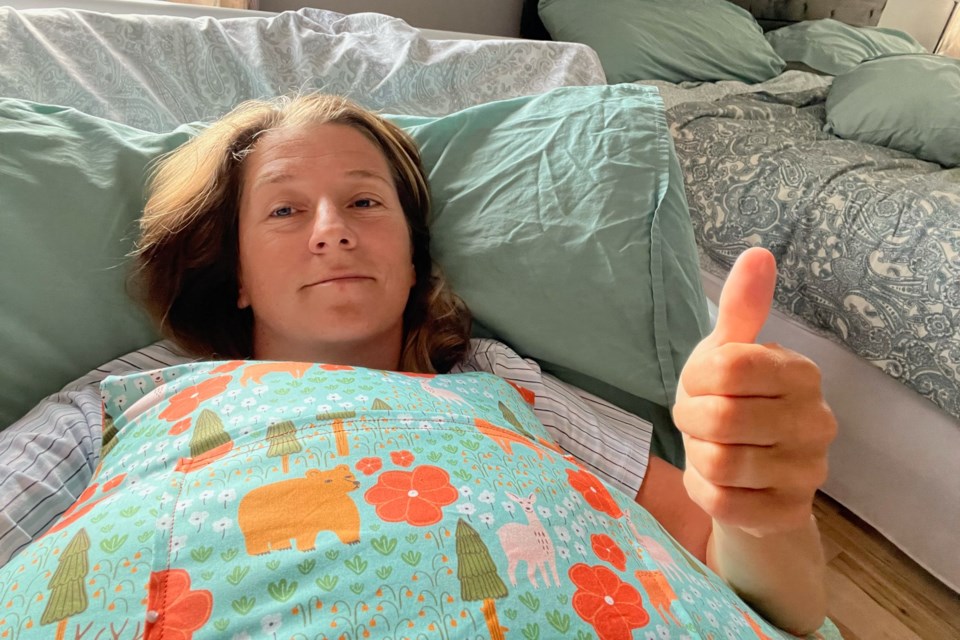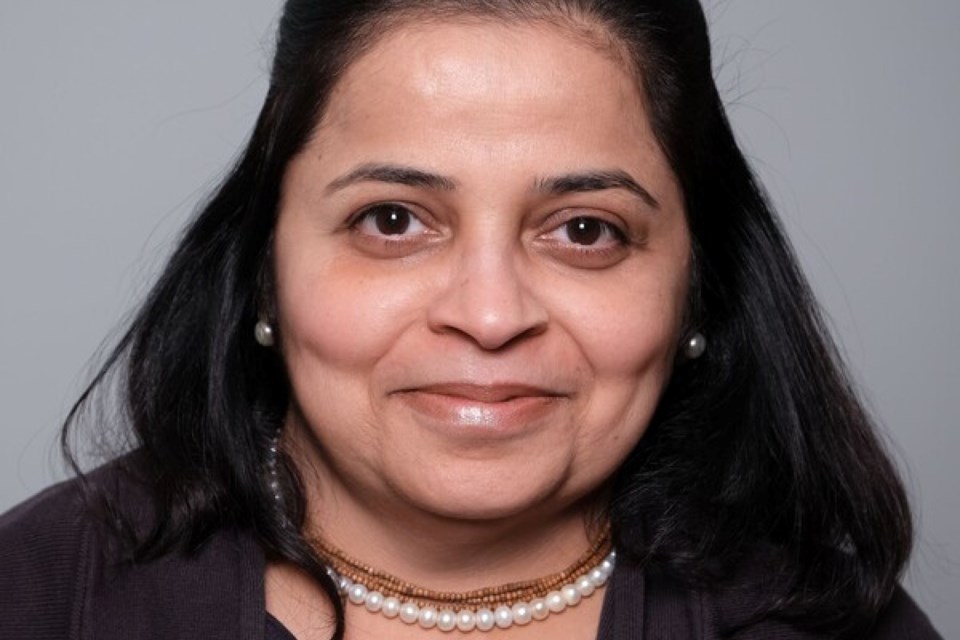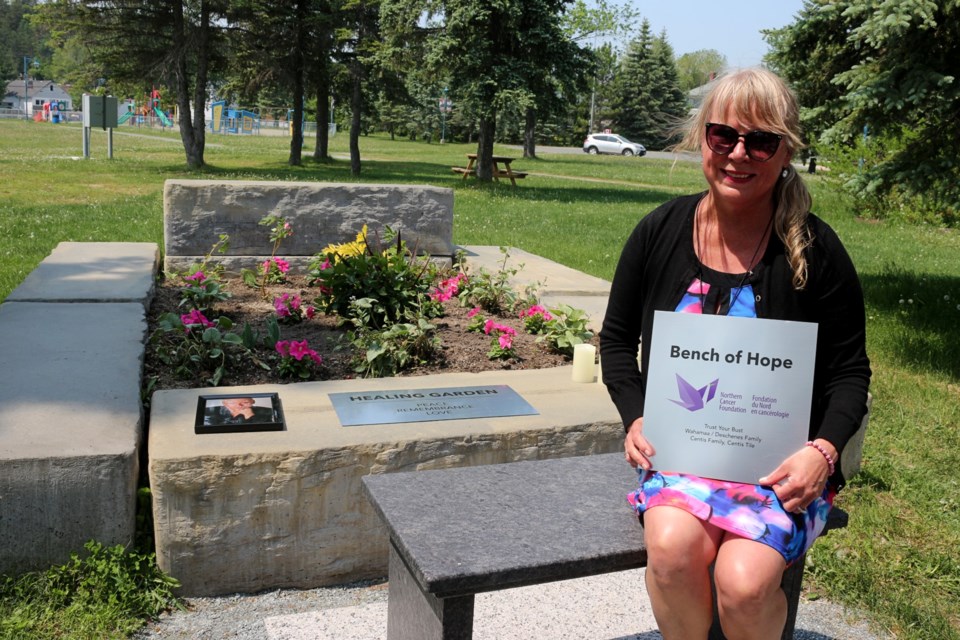It was 10 years ago this year that Kimberley Wahamaa-Deschenes was diagnosed with breast cancer.
She was 47 years old. Like most women under the age of 50, she’d never had a routine mammogram, as was the norm in Ontario.
Wahamaa-Deschenes said she was diagnosed with stage two breast cancer after finding a lump herself and getting it checked. She ended up having a lumpectomy, chemotherapy and radiation.
While she was still undergoing treatments, Wahamaa-Deschenes started an advocacy campaign called Trust Your Bust. She raised more than $18,000 for breast cancer research and to assist those with the disease, and spread awareness of the need for early detection.
One of her awareness activities was putting together a calendar featuring 13 people under the age of 50 who have been diagnosed with breast cancer.
“I sent that to the Minister of Health,” she said. “I sent a big letter with it, and didn't get a response to it, saying that there shouldn't be an age to get a mammogram.”
Wahamaa-Deschenes recently “hung up her bra” on Trust Your Bust, as she does not intend to hold any more fundraisers.
But she did want to comment when she recently learned that the Ontario government is lowering the eligibility age of self-referral for publicly funded mammograms through the Ontario Breast Screening Program from 50 to 40 beginning in fall 2024.
“Finally the government is realizing that more and more people at a younger age are being diagnosed,” Wahamaa-Deschenes. “It's a huge step. Because again, if you catch it early, you're going to save lives.”

‘It could potentially be too late by the time you're 50’
Jessica (friends know her as Jessie) Newell-Tremblay was even younger when she was diagnosed with breast cancer.
She was 39 years old when she was diagnosed on the Easter weekend of 2022, celebrating her 40th birthday that summer as she recovered from breast cancer surgery.
Newell-Tremblay said she’d had a lump on her breast that she’d known about for quite awhile. She’d had an ultrasound on the lump in 2015, and should have been having yearly scans to keep an eye on it.
But for one reason or another, including the COVID-19 pandemic, those appointments were never made.
Last year, Newell-Tremblay decided to get the lump looked at again, as she was a little concerned it hadn’t been monitored.
“I went in and it all kind of happened in one day,” she said. “I had an ultrasound, then directly to a mammogram, then directly to biopsy.”
Newell-Tremblay had a double mastectomy May 26 of last year, and in doing so, avoided chemotherapy and radiation. She’s actually had three surgeries in total, the latest Nov. 2, as she’s undergone breast reconstruction.
“It’s been a really rough 18 months, physically, and definitely emotionally,” said Newell-Tremblay, who has two children at home.
Asked what she thinks of people in their 40s — her own peers — having easier access to mammograms in Ontario, Newell-Tremblay said she thinks it’s “wonderful.” She said she’ll definitely be encouraging her friends to go for the test.
“It could potentially be too late by the time you're 50 and you get looked at, which I think happens all too often, unfortunately,” she said.
“I think as we all know, early detection is the key for sure to have the best survival rate. I think the earlier somebody can get in to get looked at, the better, you know, and then just to stay on top of it. So I think it's about time.”
Press materials in the province’s Oct. 30 announcement said the expansion of mammogram services will help more than 305,000 people connect to important screening services to detect and treat breast cancer sooner.
It is estimated that this will add an additional 130,000 mammograms that can be completed per year.
“Nearly 12,000 women are diagnosed with breast cancer each year, and we know early detection and increased access to care saves lives,” said Sylvia Jones, deputy premier and minister of Health, in the press release.
“That is why our government is taking this important step today to expand the Ontario Breast Screening Program to connect more than 305,000 additional people to the services they need to ensure timely diagnosis and access to treatment as early as possible.”

‘Truly a momentous occasion,’ says area breast imaging lead
Changing the self-referral eligibility age for mammograms to include a younger population is “truly a momentous occasion,” Dr. Supriya Kulkarni is quoted as saying in provincial government press materials on the announcement.
Kulkarni is the regional breast imaging lead for Northeastern Ontario for Cancer Care Ontario, and she recently had a conversation with Sudbury.com about the changes to breast screening eligibility in Ontario.
She said the way the Ontario Breast Screening Program currently works is women aged 50 to 74 are sent reminders to get mammograms every two years. They are also able to self-refer to get a mammogram even if they don’t have a family doctor.
Currently, women under the age of 50 require a referral from a family doctor to receive a mammogram.
Kulkarni said about 17 per cent of all breast cancers occur in women between the ages of 40 and 49, “which is a significant number of cases.”
“We've seen countless such patients that come to us at different cancer hospitals,” she added.
Because these women are not getting routine screening, when their cancers are diagnosed, they tend to be more advanced, “larger than normal screen-detected cancer.”
Changing the eligibility surrounding breast screening has “been an ongoing discussion for a while. There's a lot of patient advocacy, a lot of radiologists and physicians have been working towards this. Finally, last year, a group of us actually went to see people at Queen's Park. Eventually, this announcement was made.”
While women in their 40s have to wait until the fall of 2024 for walk-in mammograms, Kulkarni said they at least now won’t be denied by their family physician if they require a referral, “because the announcement has been made.”
She encourages women to take advantage of the eligibility changes and get a mammogram.
While Kulkarni touts the benefit of the changes to the breast screening program, ramping up the system so it can handle more patients is going to be a challenge.
She said she doesn’t have the exact figures for how many more patients that will amount to locally, but said Health Sciences North is already looking at enhancing staffing.
Kulkarni said there are already shortages in the sector, which is still playing catch-up after the COVID-19 pandemic. But it’s not like every single eligible woman will show up for a scan, she said.
“It will require a lot of work from the province, from the government, from individual hospitals and facilities to accommodate all of these people between 40 to 49,” she said. “But it's very exciting.”
Heidi Ulrichsen is Sudbury.com’s assistant editor. She also covers education and the arts scene. Women & Girls is made possible by our Community Leaders Program.



